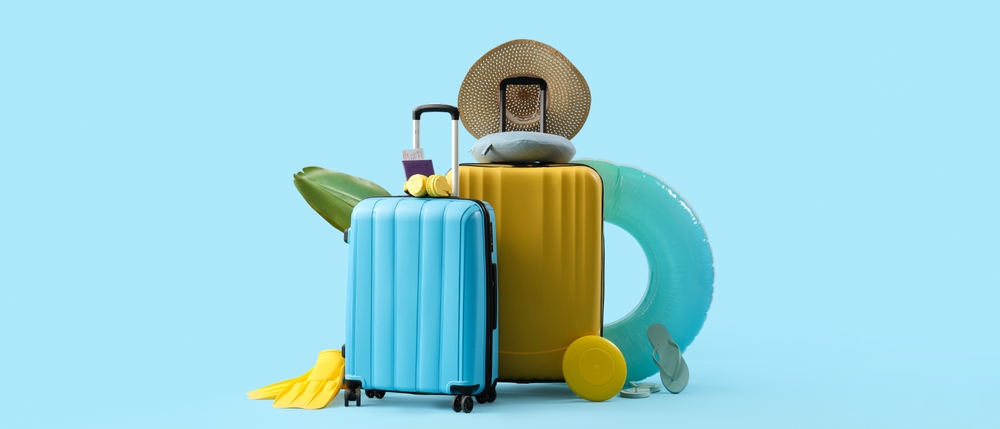I recently took a seven-day cruise with my family, and it was easily one of the best vacations we’ve ever had. While I wouldn’t call us a “cruising family” (our only previous cruise was a three-day Disney Cruise when our twins were eight), we wanted a graduation trip that offered something for everyone, whether they were thrill-seekers, relaxers, or somewhere in between. After some research, Royal Caribbean’s Harmony of the Seas checked every box.
Beyond just an incredible vacation, the experience got me thinking, how does personalization and AI together shape customer acquisition and retention? What made our journey stand out wasn’t just the dazzling ship or epic excursions. It was the customized experience before, during, and after the trip that made us feel like Royal Caribbean truly knew us.
Why Personalization Matters More Than Ever
No matter the industry, customer loyalty is harder to maintain than ever. With countless choices at their fingertips, consumers can easily switch brands if their expectations aren’t met. As marketers, we already know this, but personalization is how businesses cut through the noise to foster stronger relationships and increase retention.
By tailoring experiences to individual preferences, brands build emotional connections that boost engagement, satisfaction, and loyalty. In this article, I’ll explore how personalization enhances the customer journey and share five best practices for maximizing its impact.
How Personalization Strengthened My Cruise Experience
From the moment we started browsing cruise options, Royal Caribbean’s AI-driven personalization was at work. Ads and content targeted our specific travel dates, ages, and activity levels, ultimately leading us to press “BOOK IT!”
Pre-trip, their app and emails delivered timely reminders, from excursion options to onboard entertainment, ensuring we felt fully prepared. Once onboard, every aspect of the experience was tailored to individual needs, allowing each family member to participate in activities at their preferred pace.
This personalized approach didn’t just sell the experience; it shaped it. It built trust before departure and exceeded expectations during the trip, making loyalty a natural outcome rather than a forced retention strategy.
Five Best Practices for Personalization in Marketing
Want to harness personalization for customer retention? Here are five proven strategies that drive engagement and loyalty:
1. Leverage Customer Data: The Foundation of Personalization
Understanding customer preferences, behaviors, and needs is the first step toward meaningful personalization.
How to Implement:
- Use multi-channel data collection (website interactions, purchases, social media) to develop audience insights.
- Segment customers based on demographics, purchase behavior, or engagement patterns.
Benefits:
- Sharpens targeting strategies and content relevance.
- Improves engagement by delivering tailored experiences at key moments.
2. Create Personalized Content That Builds Relationships
Customers engage more when content resonates with their individual interests.
How to Implement:
- Use dynamic AI-powered content that adapts based on user behavior.
- Customize email campaigns to reflect past interactions and preferences.
Benefits:
- Boosts conversion rates and audience engagement.
- Strengthens brand loyalty through relevant, tailored messaging.
3. Implement Personalized Recommendations to Increase Sales & Satisfaction
Helping customers discover products or services that fit their needs enhances retention.
How to Implement:
- Use AI-powered recommendation engines to analyze browsing and purchase history.
- Offer cross-selling and upselling suggestions tailored to customer preferences.
Benefits:
- Increases average order value while improving customer satisfaction.
- Helps customers find the right solutions without extra effort.
4. Develop Personalized Loyalty Programs That Feel Exclusive
Loyalty programs work best when they reward individuals in ways that matter to them.
How to Implement:
- Provide customized rewards based on past purchases or engagement history.
- Offer exclusive perks that feel special, not generic.
Benefits:
- Encourages repeat business and long-term brand affinity.
- Elevates customer experience with meaningful rewards.
5. Utilize Personalized Customer Support for Better Service
Consumers expect fast, relevant assistance that understands their individual needs.
How to Implement:
- Deploy AI-driven chatbots for personalized, real-time customer support.
- Segment customers by support preferences to offer tailored solutions.
Benefits:
- Increases customer satisfaction and retention.
- Reduces response times while improving support efficiency.
Real-World Personalization Strategy Examples: Big & Small
Personalization isn’t limited to giant corporations; it’s a game-changer for businesses of all sizes. Here are three standout examples:
· Royal Caribbean: Their Come Seek campaign redefined cruising for millennial families, leveraging digital and influencer marketing to personalize vacation experiences beyond traditional cruise demographics.
· Sephora: Their AI-powered Virtual Artist lets users test makeup via augmented reality, recommending products based on facial features, eliminating the guesswork and saving customers from a real-life “clown face” disaster.
· FitMyFoot: This small, innovative footwear brand uses an app to digitally map customers’ footbeds, offering custom insoles and shoes without an in-store visit, making personalization truly accessible.
Final Thoughts: Personalization Drives Loyalty
Whether you’re a global corporation or a growing small business, personalization isn’t just a marketing tactic—it’s a customer experience strategy. By using AI, data-driven insights, and tailored engagement methods, brands can build stronger relationships, acquire and retain customers, and stay ahead of the competition.
Now that we’ve talked about personalized experiences … who’s ready to book their next cruise?
Kimberly Schmitz, Founder & CMO/Marketing Strategist for Small to Medium Businesses, TINK Marketing & Design




